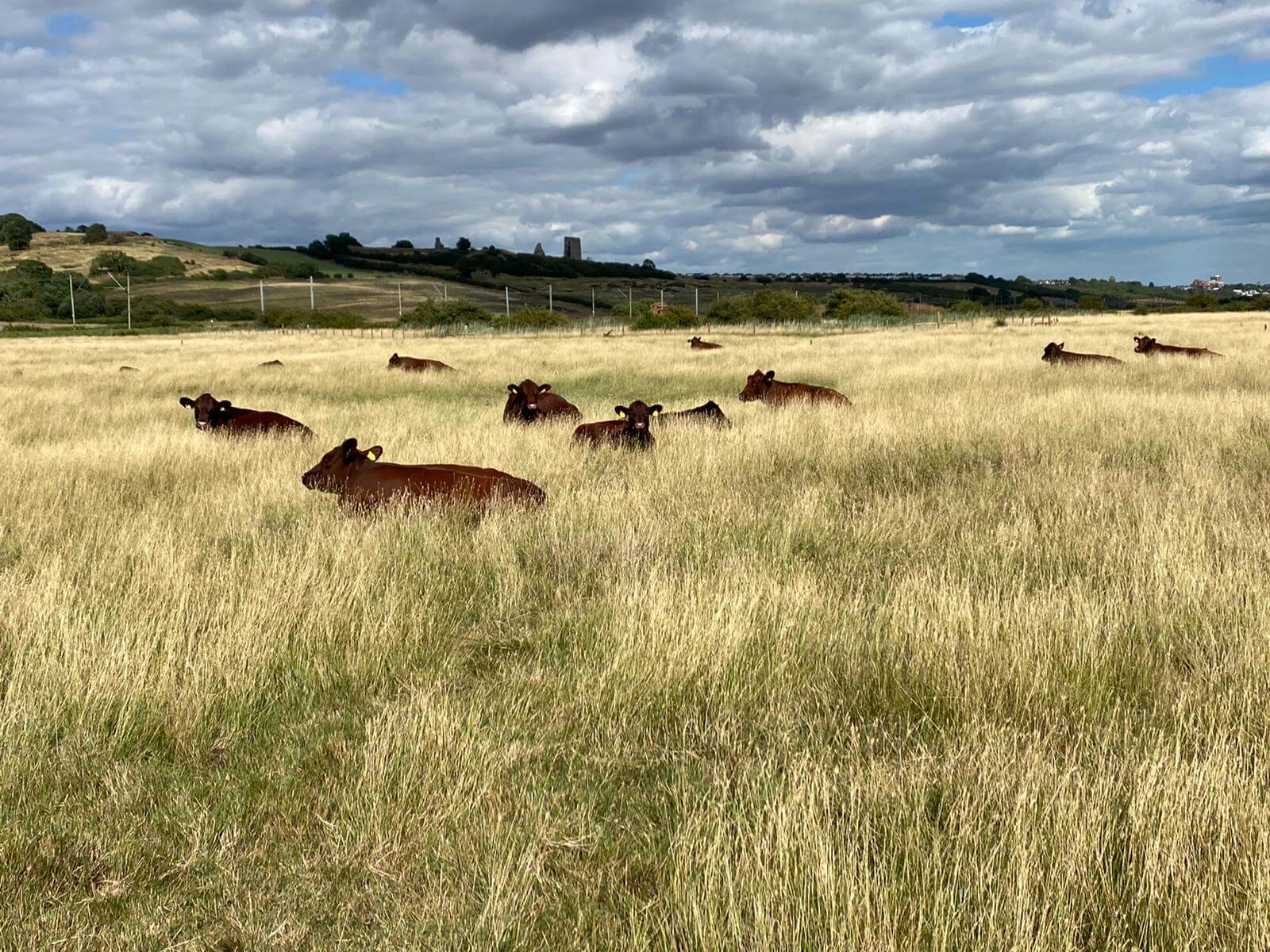


Headline picture: Red Poll cattle due to be introduced to Wild Ken Hill, at their current home in Essex.
We’re extremely excited that wild grazing animals will be released into our rewilding area over the coming few weeks (late September – early October 2020).
Any rewilding project (and many other conservation projects) are not complete without conservation grazing animals. Indeed, for the last few years, our new rewilding area has felt like an empty home, waiting for its new residents.
For our project at Wild Ken Hill, we’re going to introduce wild cattle, ponies, and pigs. These will bring a fantastic mix of grazing, browsing, soil disturbance and other benefits – all aiming to replicate the behaviours of the wild herbivores that wandered through this landscape many thousands of years ago.
For our wild cattle, we’ve selected Red Poll. The Red Poll is a hardy rare breed, derived from the original cattle of Norfolk and Suffolk, with a beautiful dark red body. It is extremely thrifty and suited to doing well on coarse vegetation. It is small in size and has a calm nature, so should pose no problems to walkers using local footpaths. We’re introducing around 30 head of Red Poll, made up mostly of in-calf cows with last year’s calf still at foot, as well as a few heffers – so no bulls to start with.
Complementing the Red Poll, we’ll be introducing about 10 Exmoor ponies. Exmoors are sometimes considered the hardiest of rare breeds, and will be very-well suited to spending all year roaming the rewilding area. Exmoor ponies that have not been handled are usually difficult to get close to, and will typically run off when walkers or dogs get close, rather than confront them.
In addition to the wild deer population here, the Red Poll and Exmoors will graze and browse off vegetation. We hope this helps to enhance the habitat on the rank and overgrown heathland in the rewilding area, as well as creating the woodland pasture environment that is associated with very high biodiversity, as we described in a previous blog.
Their dung also helps to cycle nutrients, they carry seeds around in their fur which helps vegetation to spread, and the Exmoors will even create bare ground that supports early successional species by taking dust baths.
Finally, two Tamworth pigs will be released into the rewilding area, aiming to replicate the behaviour of the wild boar. The Tamworths have quite a different effect to the Red Poll and Exmoors – they disturb the soil, almost ploughing the top layer as they rootle in search of food. This behaviour helps vegetation to regenerate, and we’re particularly hoping will help to restore our acid heathland, which is rank and overgrown. A mature Tamworth sow can disturb around 50 acres of top soil in a year!
The introduction of wild herbivores to Wild Ken Hill marks the culmination of many years of planning and hard work, and should add momentum to the growth in biodiversity on the site. Much of the work to date has been administrative, but over the last few months we’ve also constructed a perimeter fence around the rewilding area.
The new fence has been specifically designed to keep livestock in, with netting at the bottom to prevent the pigs escaping, with a barbed strand at a sufficient height to prevent the cattle and ponies from forcing it over.
Public access on the Snettisham circular and Ken Hill circular walks will remain the same, and we encourage all users of these wonderful footpaths to continue enjoying the woods, and we hope that they enjoy watching the animals roam freely through the area during walks.
We will be providing updates through our social media channels (Instagram, Facebook, Twitter) on the precise timing and location of the wild cattle, pony and pig releases. We are hoping to make the releases visible from the public footpaths, so any walkers can take the time to enjoy the special moment the animals enter their new home.